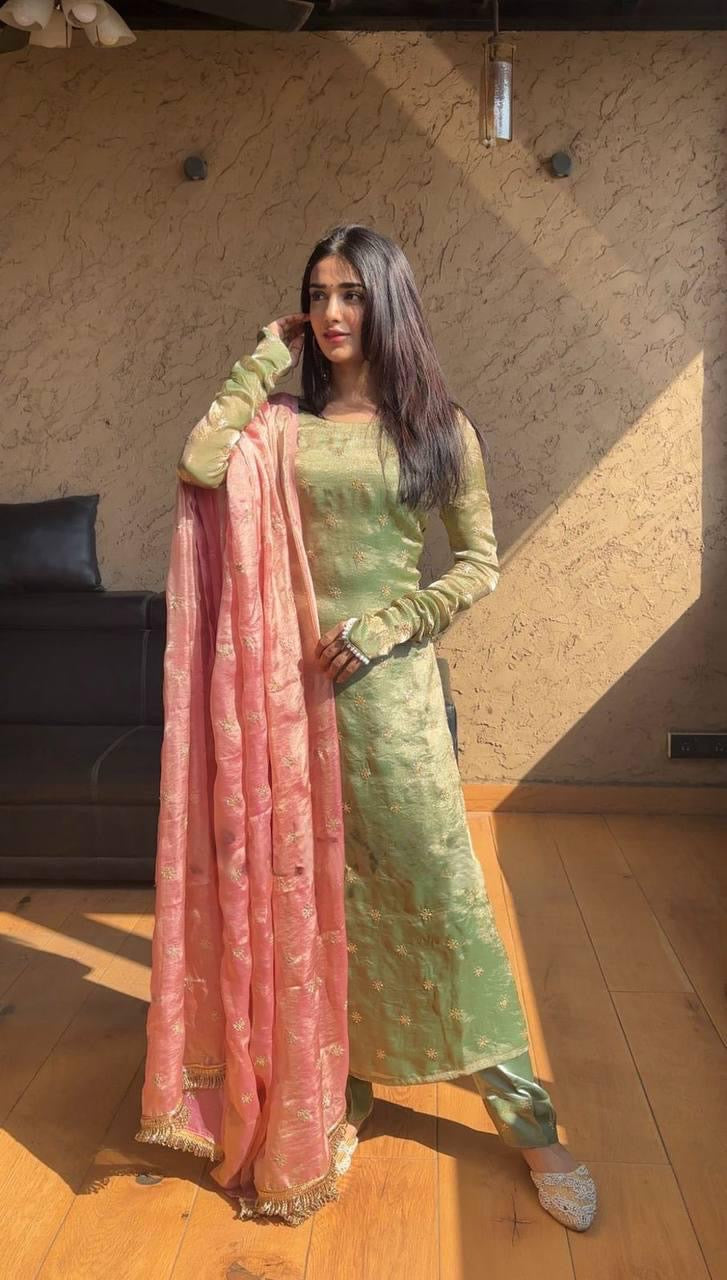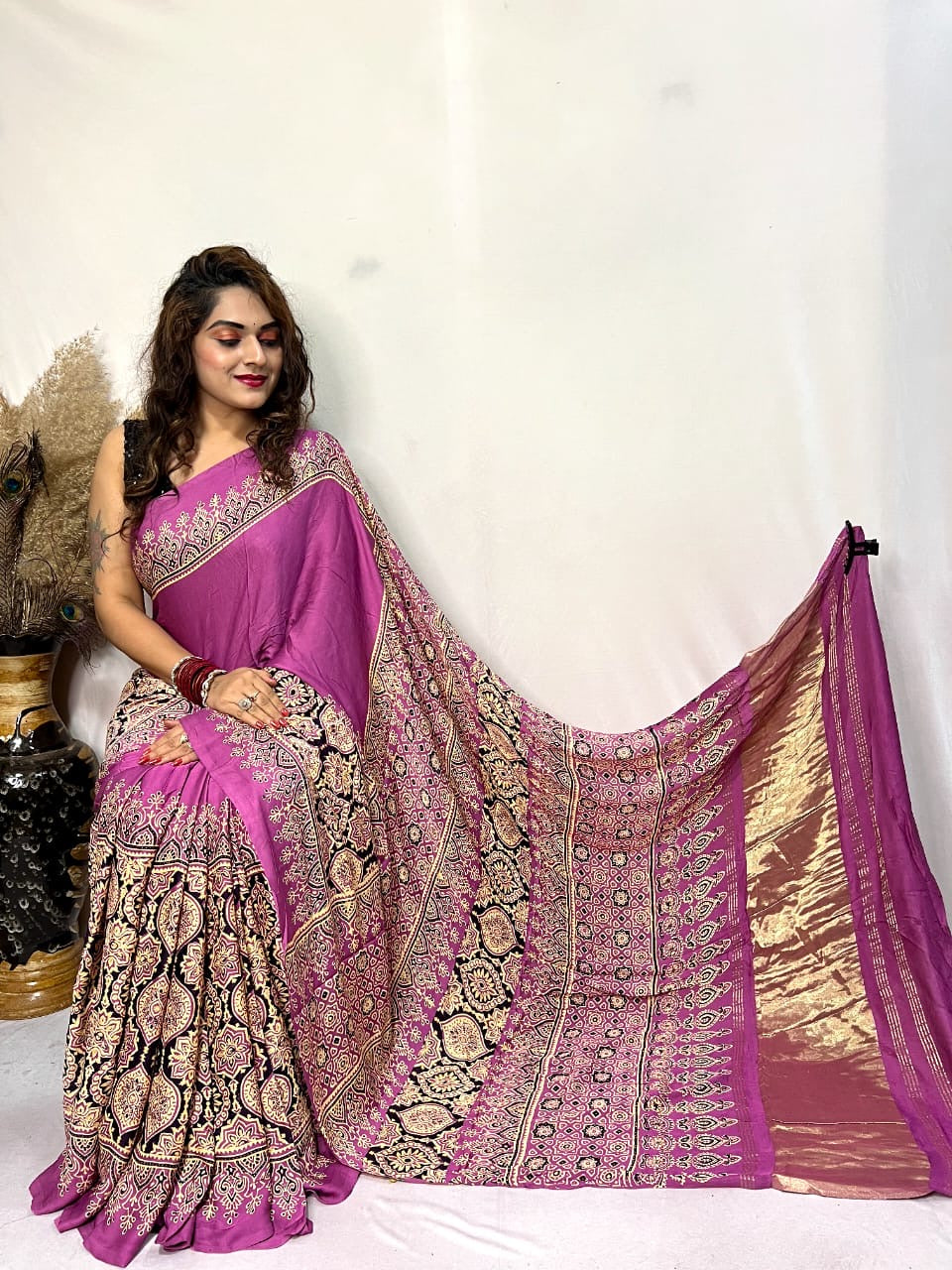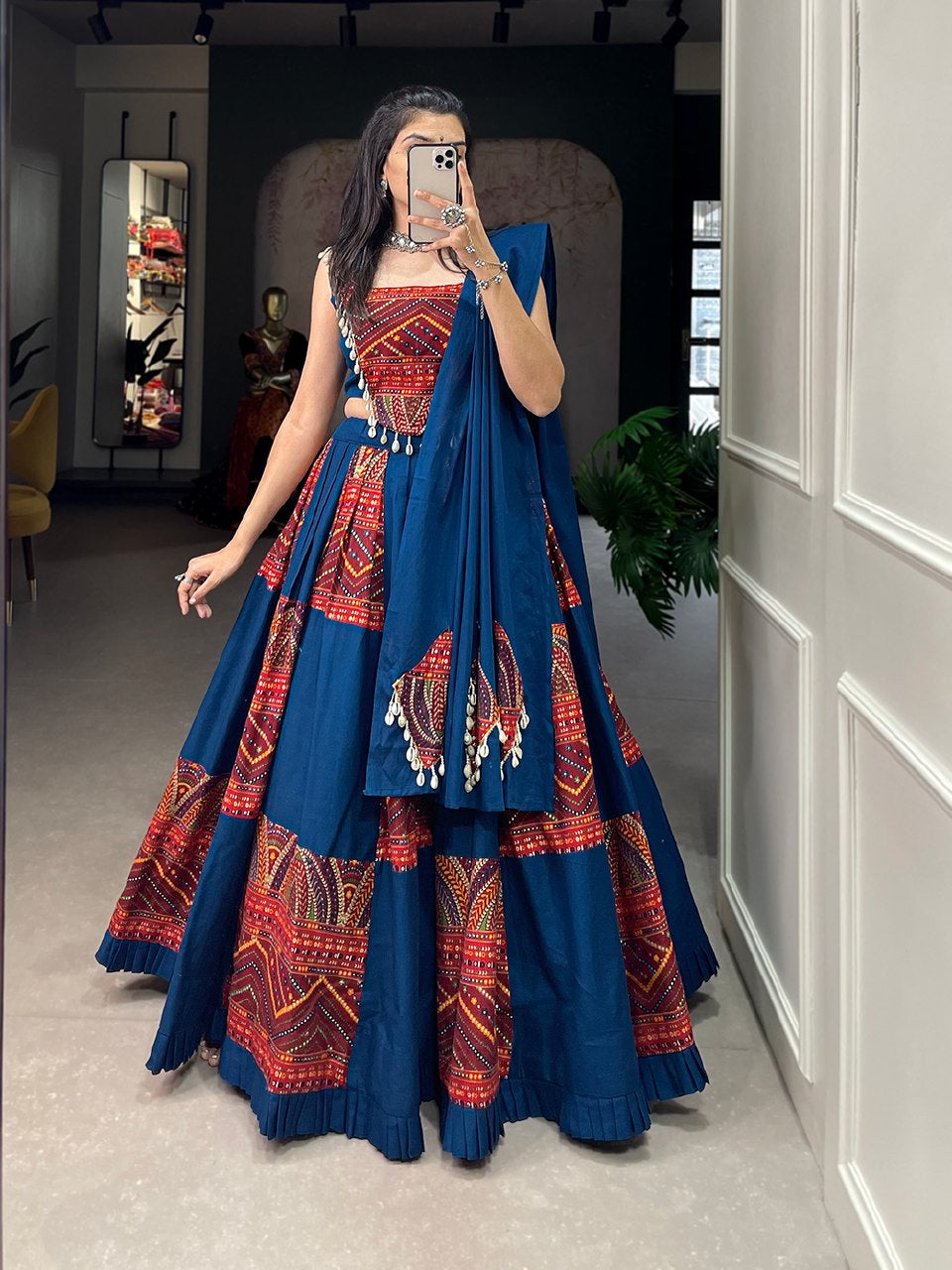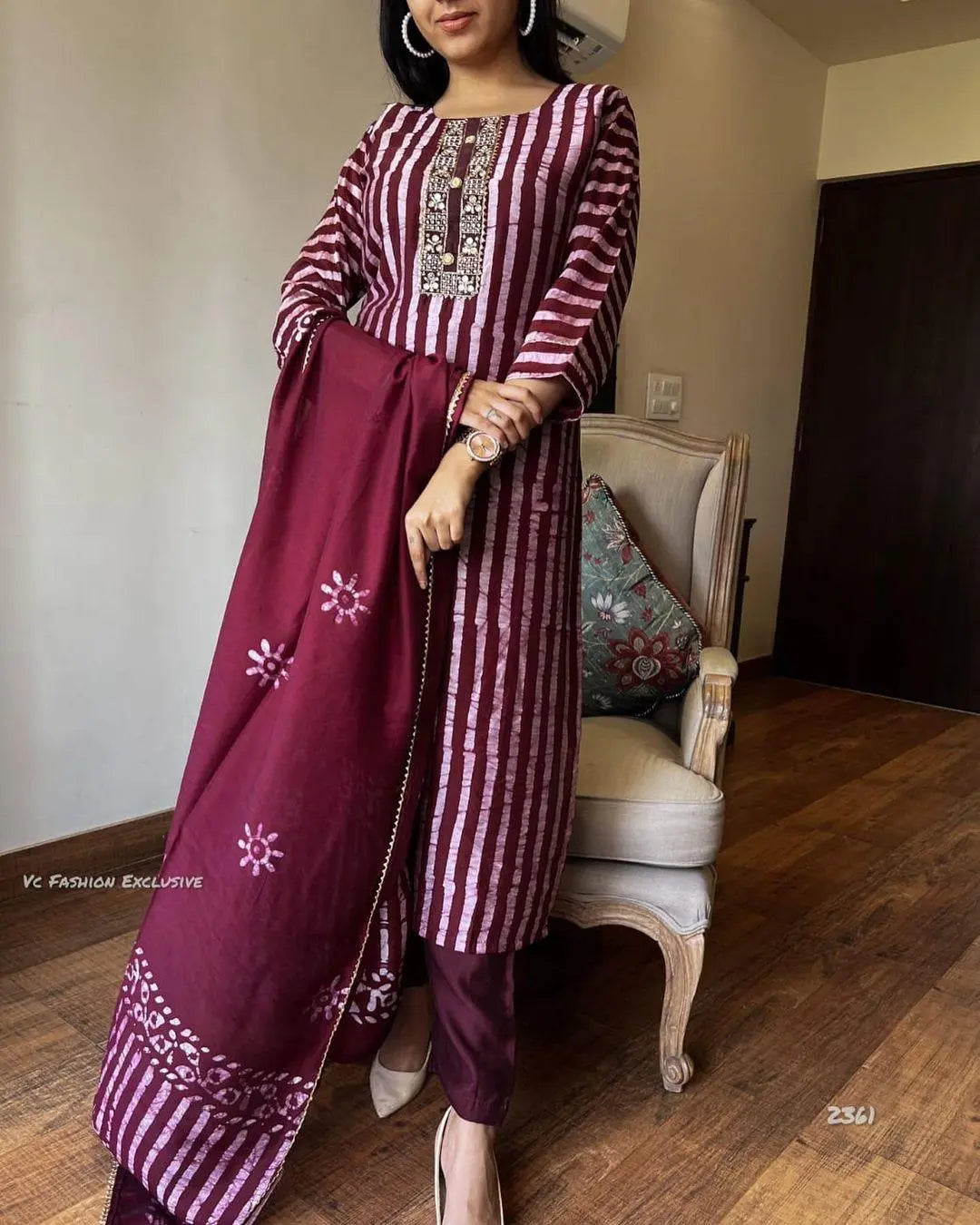The art of Bandhani is a highly skilled process. The technique involves dyeing a fabric which is tied tightly with a thread at several points, thus producing a variety of patterns like Chandrakala, Bavan Baug, Shikari etcetera; depending on the manner in which the cloth is tied. The main colour used in Bandhana are yellow, red, blue, green and black. Each colour is traditionally tied to specific cultural meaning. Red is a symbol of marriage and is connected to rituals of married women, yellow stands for spring and is connected to both the season and childbirth, saffron is the colour of renouncer of the world and connects with warriors ready to give up their life in war or to yogis who give up worldly life, black and maroon are used for mourning.
As Bandhani is a tie and dye process, dying is done by hand and hence best colours and combinations are possible in Bandhanis. There are two types of dyeing traditionally categorised according to durability of colours - pakka, in which the colours do not come off easily and Kaccha, in which the colours fade or wash off easily. Historically, Kaccha technique was the more preferred one as the colours could be refreshed again and again while pukka technique was considered to be suitable for old people. The finest and most complicated patterns, whether for men's turbans or women's drapes called odhnis, were always dyed in kachcha colours.[9] The main colours used in Bandhana are natural. [9]T H Hendley, writing in the 19th century, provided the organic sources of the colours used for Bandhani, Most of them like the red ( both pukka and kaccha), indigo were derived from flowers while yellow by mixing turmeric with buttermilk.
In Gujarat, the Bandhani work has been exclusively carried out by the Khatri community of Kutchh and Saurashtra. A meter length of cloth can have thousands of tiny knots known as 'Bheendi' in the local language ('Gujarati'). These knots form a design once opened after dyeing in bright colours. Traditionally, the final products can be classified into 'khombhi', 'Ghar Chola', 'Chandrakhani', 'Shikari', 'Chowkidaar', 'Ambadaal' and other categories.
Bandhani work is also done in Rajasthan, where different colours and designs are used than the Kutch and Saurashtra regions of Gujarat. Establishments of varying sizes in the entire Kutch belt in Gujarat produce many varieties of Bandhani. This Bandhani style is called as the Kutchi Bandhani. The bold patterns of Bandhani are very similar in design, motifs, and technique in the desert belt encompassing northern Kutch in Gujarat, Western Rajasthan, and Sindh even in Pakistan.
Bandhani tying is often a family trade, and the women of these families work at home to tie patterns. Pethapur, Mandavi, Bhuj, Anjar, Jetpur, Jamnagar, Rajkot, are some of the main towns in Gujarat, where Bandhani is created. The city of Bhuj in Gujarat is well known for its red Bandhani. Dyeing process of Bandhani is carried out extensively in this city, as the water of this area is known to give a particular brightness to colours, specifically reds and maroons. As with other Indian textiles, in Bandhani too different colours convey different meanings. People believe that red is an auspicious colour for brides












